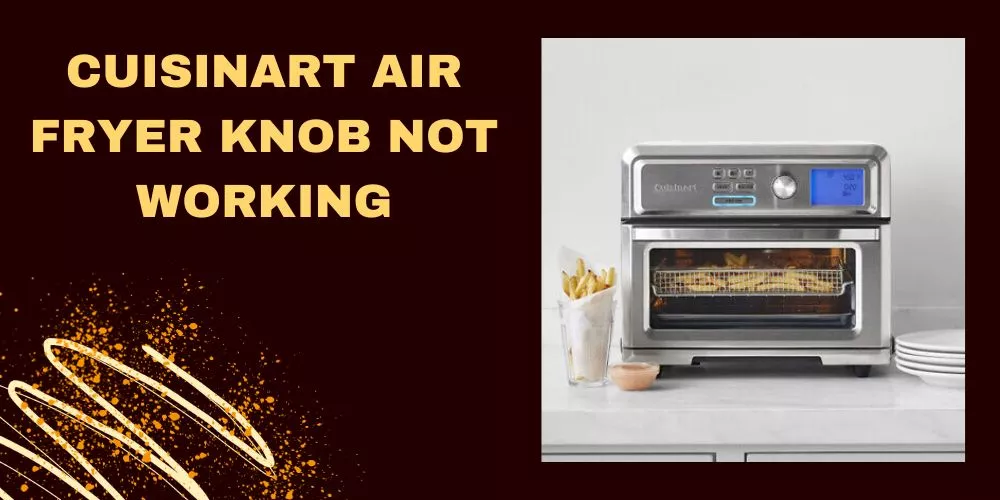Struggling with burnt milk residues on your stove? We’ve all been there. When happy milk boils morphs into a tedious cleanup task, it can turn your cooking experience bitter.
But worry not. This article aims to guide you how to get burnt milk off stove, bringing back your kitchen’s aesthetic charm.
With these simple tricks, you can say goodbye to the exhausting scrubbing sessions and hello to a spotless stove.
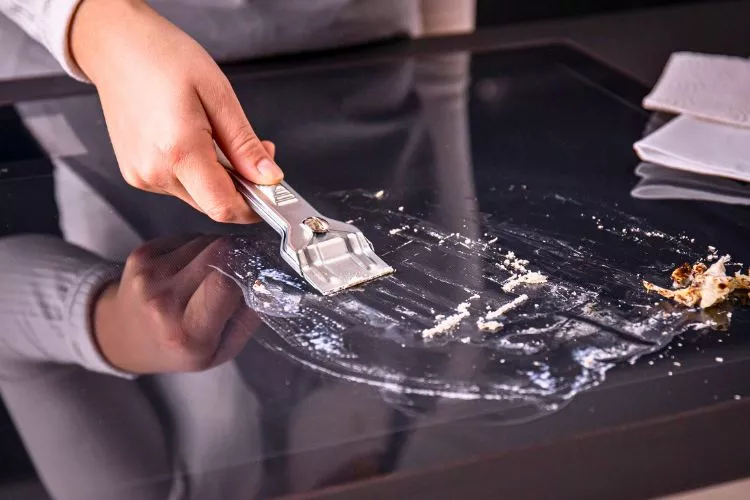
Stay tuned as we lift the lid on these easy-to-follow, time-saving cleanup techniques.
How to Get Burnt Milk Off Stove: A Comprehensive Guide
Unsightly burnt milk stains on your stove can be stubborn and annoying to clean, but with the right solutions and techniques, you can have your stove looking brand new in no time.
This guide explores step-by-step instructions on efficiently get burnt milk off stove using various methods.
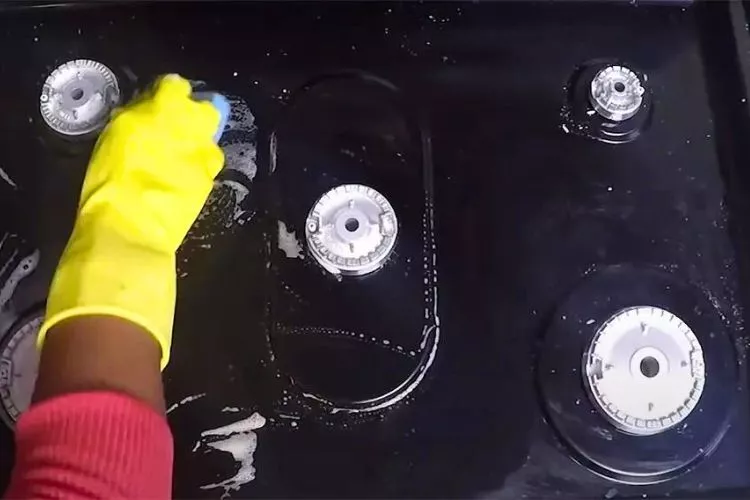
Gentle Approach
For mild burnt milk stains, these easy-to-follow steps should do the trick.
Materials:
- Warm soapy water
- Sponge or non-abrasive scrubber
- Dry cloth or paper towel
Procedure:
- Turn off and unplug the stove before cleaning for safety reasons.
- Fill a bowl with warm water and add a few drops of dishwashing soap to create a soapy solution.
- Dip the sponge or non-abrasive scrubber into the soapy water and squeeze out the excess solution.
- Gently scrub the burnt milk area until the stains are lifted.
- Wipe the area thoroughly with a wet cloth to remove soap residues.
- Dry the area with a clean cloth or paper towel.
Baking Soda Solution
Baking soda is an excellent cleaning agent for more stubborn burnt milk stains.
Materials:
- Baking soda
- Water
- Sponge or non-abrasive scrubber
- Dry cloth or paper towel
Procedure:
- Ensure that the stove is turned off and unplugged.
- Mix equal parts of baking soda and water to create a thick paste.
- Apply the baking soda paste onto the burnt milk stains and let it sit for 10-15 minutes.
- Use the sponge or non-abrasive scrubber to gently scrub the area in a circular motion until the stains are removed.
- Wipe the area clean with a wet cloth to remove any leftover baking soda residue.
- Dry the area with a clean cloth or paper towel.
Vinegar Solution
Household white vinegar is an effective, eco-friendly alternative to commercial cleaners.
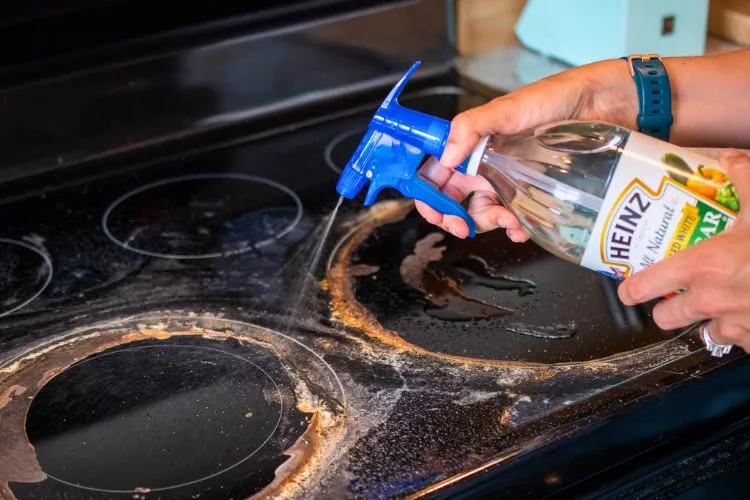
Materials:
- White vinegar
- Water
- Spray bottle (optional)
- Sponge or non-abrasive scrubber
- Dry cloth or paper towel
Procedure:
- Make sure the stove is turned off and unplugged.
- Dilute white vinegar with equal water in a bowl or spray bottle.
- Apply the vinegar solution to the burnt milk stains by spraying or using a cloth.
- Allow the solution to sit on the stains for 5-10 minutes.
- Carefully scrub the stains with a sponge or non-abrasive scrubber.
- Wipe the area with a wet cloth to remove any vinegar residue.
- Dry the area thoroughly with a clean cloth or paper towel.
Commercial Cleaners
When all else fails, resort to commercial stove cleaners for heavy-duty cleaning.

Materials:
- Stovetop cleaner (follow manufacturer’s instructions)
- Sponge or non-abrasive scrubber
- Dry cloth or paper towel
Procedure:
- Turn off and unplug the stove before cleaning.
- Follow the manufacturer’s instructions for applying the stovetop cleaner.
- Gently scrub the burnt milk stains with a sponge or non-abrasive scrubber.
- Wipe the area with a wet cloth to remove any residue.
- Dry the area using a clean cloth or paper towel.
Using Hydrogen Peroxide
Materials:
- Hydrogen peroxide
- Baking soda
- Dish soap
- Non-abrasive scrubber
- Warm water
- Cloth or paper towel
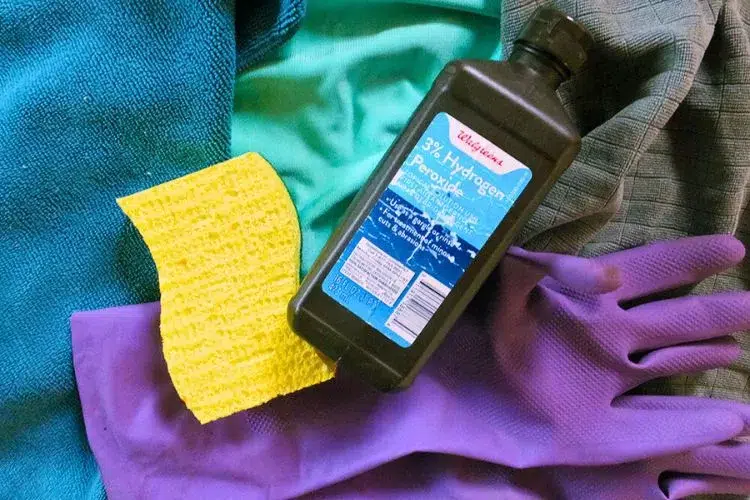
Procedure:
- Turn off and unplug the stove for safety.
- Mix a few droplets of dish soap, a half cup of baking soda, and a quarter cup of hydrogen peroxide into a thick paste.
- Apply the paste over the stain and leave it for about 15 minutes.
- Use a non-abrasive scrubber or sponge to scrub the stain gently.
- Wipe the paste off using warm water and a cloth.
- Pat the surface dry with a towel or paper towel.
Using Lemon and Salt
Materials:
- Lemon
- Salt
- Warm water
- Sponge or non-abrasive scrubber
- Cloth or paper towel
Procedure:
- Turn off and unplug the stove.
- Cut a lemon in half and dip it into some salt.
- Use the lemon to scrub the burnt milk on the stove. The acidity of the lemon combined with the abrasive properties of salt should lift the stain.
- Wipe the surface with a wet cloth to clean up the residue from the lemon-salt mixture.
- Dry the area thoroughly with a cloth or paper towel.
Always rinse and dry the stove spotless after each cleaning session to prevent residues from becoming another cleaning nuisance.
Additionally, always do a spot test or check the manufacturer’s instructions before using any cleaning solution on your stove.
Prevention Tips
To minimize the risk of burnt milk stains in the future, follow these useful tips:
- Use a larger pot when boiling milk to prevent overflow.
- Keep the heat setting low to medium and monitor the milk’s progress.
- Immediately clean up spills to avoid staining the stovetop.
- Regularly clean your stovetop to maintain its appearance and function.
Each method can help you eliminate burnt milk stains from your stove, restoring its immaculate appearance and making your kitchen shine again. With patience and persistence, you can easily handle even the most stubborn stains.
How do I get burnt milk off my glass top stove?
Glass top stoves are sleek, modern, and pretty stylish. However, they can also be challenging to clean, especially when it comes to stubborn burnt milk stains.
Here’s a detailed plan to get your glass top stove looking spotless:
Materials:
- Baking soda
- White vinegar
- Dish soap
- Microfiber or soft cloth
- Warm water
- Spray bottle

Procedure:
- Let the glass top cool completely. This is critical because applying cleaners to a still-warm stove could cause it to crack.
- Spray or sprinkle white vinegar over the burnt milk surface. Vinegar breaks down the burnt milk making it easier to clean.
- Sprinkle baking soda all over the vinegar-soaked stains. It’s okay if it fizzes; that’s just the vinegar reacting with the baking soda.
- Wet a cloth with warm soapy water. Wring it out so it’s damp but not dripping, and place it over the vinegar-baking soda mixture.
- Let it sit for 15 minutes. Longer for very stubborn stains to allow the mixture to further break down burnt residue.
- The moist cloth removes the stove top, adding more pressure over the stubborn spots. Do not use a scrub brush or steel wool, as these can scratch the surface.
- Rinahse the cloth, and wipe the stove again to remove remnants of vinegar, baking soda, and soap.
- Finally, dry the surface with a clean towel or cloth to prevent streaks.
How do you get burn marks off a ceramic stove top?
Ceramic stove tops merge function and aesthetics into beautiful, brilliant art. Naturally, keeping them looking their best is essential. Here’s how to get it done:
Materials:
- Baking soda
- Warm water
- Dish soap
- Soft cloth or sponge
- Razor scraper
- Towel
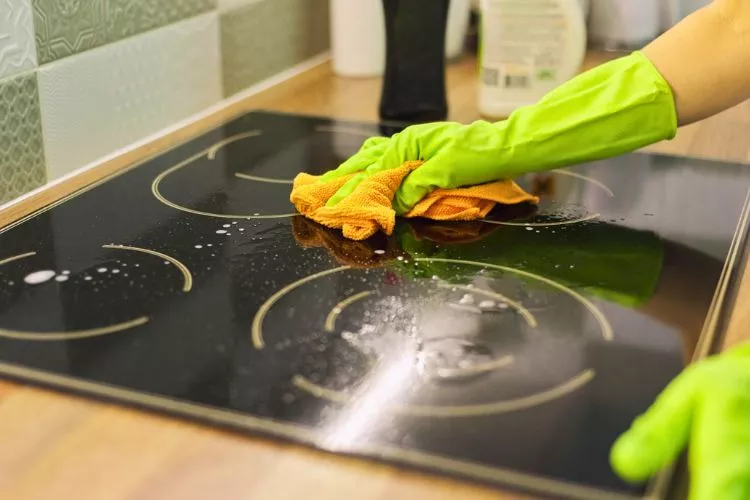
Procedure:
- Ensure the stove is completely cool, as abrupt temperature changes can cause the ceramic to crack.
- Prepare a paste by mixing baking soda and warm water in a 3:1 ratio.
- Apply a thick layer of the paste onto the burnt-on marks.
- Let the paste sit on the burner marks for at least 15 minutes to allow the baking soda to loosen the stains.
- Using a damp cloth or sponge, gently start scrubbing the affected areas. If the stains persist, let the paste sit for a little longer, up to an hour.
- For stubborn and hard-to-remove stains, consider using a razor scraper designed for ceramic stovetops. Remember to hold it at a 45-degree angle and scrape gently to avoid causing scratches.
- Wipe the stove with a wet, soapy cloth to clean off the residue, then rinse the cloth and wipe the stove again.
- Dry the stove with a clean towel to avoid water spots and streaks.
Both methods are effective and safe, considering the delicate nature of glass and ceramic stovetops. Test a small area first to ensure these methods work well with your stove.
Prevention is always better; prompt cleaning as spills happen will keep your stovetop looking its best and avoid tougher cleaning jobs down the line.
How to get burnt milk off stove without baking soda?
Without a doubt, cleaning burnt milk from a stove without baking soda can be challenging but possible. You can use different combinations of household items as alternatives.
Using Vinegar
Due to its acidic nature, vinegar can help break down burnt milk residues.
Procedure:
- Ensure your stove is cool and safe to touch.
- Spray or sprinkle white vinegar onto the surfaces with burnt milk.
- Allow the vinegar to sit for several minutes to disintegrate the stain.
- Wipe the area with a clean, damp cloth.
- Repeat as necessary, and remember to dry the surface completely afterwards to prevent water marks.
Liquid Dish Soap and Toothbrush
Another alternative is to use liquid dish soap and an old toothbrush.
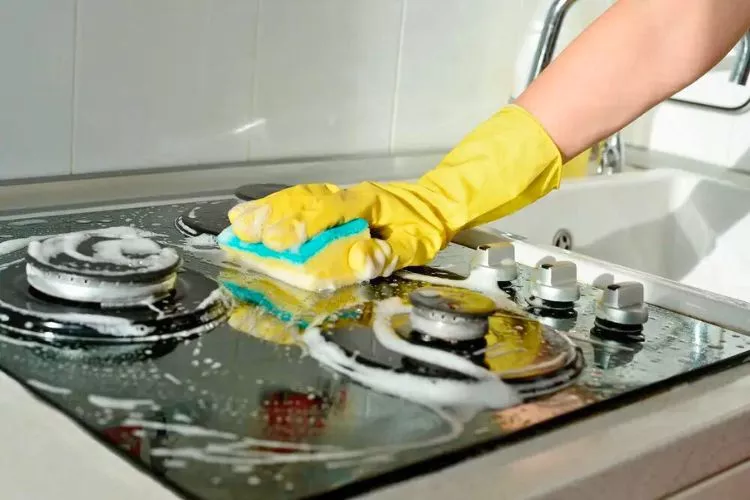
Procedure:
- Apply a liberal amount of dish soap to the burnt milk.
- Use a toothbrush to gently scrub affected areas.
- Wash off the residue and the soap with clean water, then dry the stove.
Remember, for all cleaning procedures, always ensure the stove is off, fully cooled, and, if possible, unplugged to ensure safety. Test these methods in a small area first to see if they work well with your particular stove to prevent possible irreversible damage.
Conclusion:
Getting rid of burnt milk from your stove can seem daunting, but the process doesn’t have to be demanding. Simple at-home solutions like vinegar, dish soap, or commercial cleaners ensure efficient cleaning.
For tougher stains, baking soda or hydrogen peroxide can offer excellent results.
Always clean spills promptly to avoid the hardening of burnt milk, and regularly clean your stovetop for ease of future cleaning. With a disciplined approach and the right techniques, maintaining a spotless stove is a breeze.

